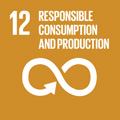- Docente: Andrea Zucchelli
- Credits: 9
- SSD: ING-IND/14
- Language: Italian
- Moduli: Andrea Zucchelli (Modulo 1) Gregorio Pisaneschi (Modulo 2)
- Teaching Mode: In-person learning (entirely or partially) (Modulo 1); In-person learning (entirely or partially) (Modulo 2)
- Campus: Bologna
- Corso: First cycle degree programme (L) in Automation Engineering (cod. 9217)
-
from Sep 17, 2024 to Dec 20, 2024
-
from Sep 16, 2024 to Dec 16, 2024
Learning outcomes
The course aims to provide students with the knowledge related to the architectures of automatic machines and their main subsystems including fluid actuation systems, with particular regard to pneumatic systems. Students are also given an introduction to additive manufacturing technologies and their applications for automatic machines. At the end of the course, the student: - has the ability to analyze the architectures of automatic machines. - can approach a functional design of an automatic machine - can manage some issues related to automatic machines in the perspective of industry 4.0 - can analyze and a pneumatic circuit - can design a simple pneumatic circuit - can apply the knowledge acquired in additive manufacturing in order to approach a mechanical components project.
Course contents
The course is structured in two modules corresponding to 6 CFU and 3 CFU, respectively. The two modules are developed in a parallel manner during the lecture period.
The first module, 6 CFU (60 hours), is organized into the following chapters:
M1-1. The first section consists of the following chapters:
M1-1 History of Industrial Automation and Automatic Machines in the context of Bologna
M1-2 Introduction to the basics of Industrial Automation
M1-3 Parameters for calculating the productivity of an automatic machine
M1-4 Probabilistic calculation of the productivity of the automatic machine and of a line of automatic machines
M1-5 General overview of the main architectures of automatic machines:
- Asynchronous intermittent machines
- Synchronous intermittent machines
- Continue Machines
- Hybrid Architecture Machines
In the second module, 3 CFU (30 hours), the following topics are covered:
M2-1 Introduction to Fluid Actuation Systems for Automatic Machines.
M2.2 Application and choice of fluid actuation systems to groups of Automatic Machines
M2.3 Development of an assembly project
The first and second modules are completed by exercises carried out by the teacher during the lectures. In addition, the teacher, during the lessons, assigns activities and exercises for the students to do at home and which must be collected in an exercise book that will be an integral part of the exam. At times the teacher may assign students to complete exercises that the teacher has set during lectures. The exercises are assigned during class, and there is no specific day during which the exercises are assigned and done. The group project must be done and checked by the teacher before the end of the course and will be part of the exam.
Readings/Bibliography
1. Dispense del Corso
2. Complementi per macchine automatiche, (assembled in Create-McGraw-Hill's software by Andrea Zucchelli), McGraw-Hill Education (august, 27th, 2019), ISBN-10: 130747454, ISBN-13: 978-1307474541 (only in italian lenguage)
3. Geoffrey Boothroyd, Assembly Automation and Product Design, CRC Press, Taylor & Francis Group, 2005
4. Stephen J. Derby, Design of Automatic Machinery, Marcel Dekker, 2005
5. A.A.V.V., Advances in Future Manufacturing Engineering, CRC Press, Taylor & Francis Group, 2015
6. A.A.V.V., Future Mechatronics and Automation, CRC Press, Taylor & Francis Group, 2015
7. Bruno Lotter, Manufacturing Assembly Handbook, Butterworths, 1986
8. Marco Fortis, Monica Carminati, The Automatic Packaging Machinery Sector in Italy and Germany, Springer, 2015
Teaching methods
Teaching participates in the University's teaching experimentation project using of slides and videos.
The course is developed both providing theoretical concepts and carrying out and assigning theoretical exercises and applications related to construction aspects of Automatic Machines.
To students are assigned exercises to be carried out autonomously and individually (only if specified by the teacher some exercises may be carried out in groups and, in this case, the names and surnames of the students who participated in the group must be specified in the homework book). These exercises must be collected, in an orderly manner, in a homework book that the students must bring to the exam for oral discussion.
Assessment methods
The examination will cover the topics covered during Module 1 and Module 2. The examination will take the form of an oral interview with the lecturer and may be preceded by a multiple-choice test for minimum knowledge. The multiple-choice test will last a maximum of one hour and will contain 5 questions about the course's basic concepts, it may require the logical development of simple calculations, and during the test, students will be able to consult all the material available to them. The multiple-choice test will be passed if there are 4 out of 5 correct answers. After passing the multiple-choice test, it will be possible to enter the oral examination, which will be given on the same day. During the oral test, the student will have to answer theory questions and discuss the exercises in the workbook. In addition, the professor may ask the student cross-curricular and reasoning questions related to the topics and exercises. As a rule, 5 questions will be asked during the oral examination, 3 associated with the first module and 2 related to the second module. To pass the exam, the student must answer at least 4 of the 5 questions correctly and thoroughly
Teaching tools
PowerPoint presentations and audiovisual
Office hours
See the website of Andrea Zucchelli
See the website of Gregorio Pisaneschi
SDGs




This teaching activity contributes to the achievement of the Sustainable Development Goals of the UN 2030 Agenda.
